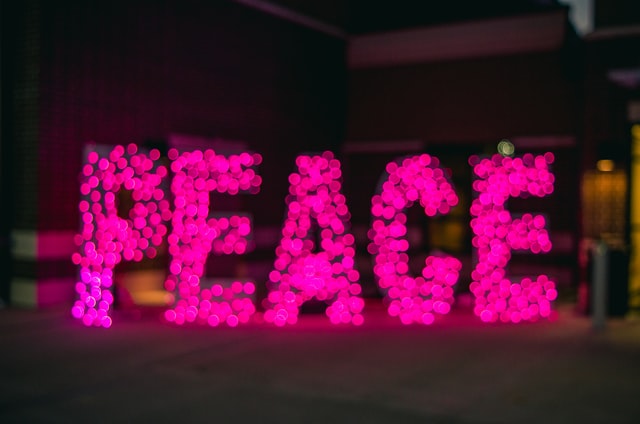Different colors evoke different emotions. Pink sets you up for a romantic mood, blue pacifies, red makes you act, green disposes to itself. Each person has “his” native color. Further, about what character traits are possessed by those to whom the pink tint is especially lovely. Psychology has closely intertwined the color and character of a person.

How does color characterize personality?
But first, let’s see how human psychology is related to pink relatives or what’s The value of pink in psychology and also- red, burgundy, yellow, as well as its opposites – blue and turquoise (aquamarine).
Who loves red: psychology
Red is a passion first and foremost. Lovers of this color always want to do everything faster, higher, stronger. Be ahead of others. They are born athletes, politicians, careerists. However, impatience, reckless courage, excessive stubbornness often prevent them from achieving something meaningful in life. Life on the principle of “all or nothing” often ends badly for lovers of red.
Who loves yellow – psychology?
Lovers of yellow are sanguine by nature. Difficulties are experienced easily, do not lose heart. They love creativity (especially acting), noisy companies. Those who respect yellow are generous, sincere. They love to waste emotions and money.
Burgundy color – meaning in psychology
A dark shade of red (burgundy) is preferred by pragmatists and conservatives. Such individuals adore everything in particular. Emotions are usually not like – they are associated with burgundy lovers with female impracticality, empty chatter without specific deeds. The burgundy color in psychology belongs to ambitious personalities. They have real goals in front of them, they achieve them by real means. Without fanaticism. Such rationality favorably distinguishes burgundy from “red”, who are ready for rash actions in order to achieve their goal.
Who loves blue: psychology
Blue is the color of calmness, confidence. Lovers of blue prefer to spend time alone with themselves. Such personalities are non-conflicting, it is very important for them to have a good attitude towards them from others. People who love the color blue, in their psychology, will always prefer a bad world to a “good” war.
Turquoise color – meaning in psychology
The greenish-blue hue of the oceans-seas is called turquoise (aka aquamarine). Turquoise color in psychology is preferred by individuals who are phlegmatic in nature. These are calm, strong-willed natures, doing everything “quietly”, gradually moving confidently towards the goal. This is what turquoise means in psychology.
What does pink mean?

The value of pink in psychology? Girls and young girls. Cute and very feminine is the first thing pink is associated with. But we have it, yes in the West. But in other cultures (in the same Japan), this color, on the contrary, personifies the masculine principle. Although aggressive “machismo” in pink is difficult to find. Here is faith, hope, love in him more than enough. No wonder the first rays of the sun, scattering the darkness – “hopelessness” are just pinkish.
What does pink mean in psychology – the feminine principle
For a very long time, pink has been associated with girls. Especially kind, naive. This soft shade is associated with the ability to find compromises, avoid conflicts. Lovers of this shade are often devoid of ambition, preferring to give more than take. Such individuals respect the freedom of others, therefore they are unobtrusive, tactful.
But there is a negative side to all this femininity. The pink color in psychology belongs to rather fickle personalities, easily carried away by new ones, looking at things too superficially. Yesterday, it seemed, completely devoted to the cause, to the person, and today they are interested in others.
In addition, because of their dreaminess, impracticality, lovers of a “feminine” shade tend to greatly exaggerate their own capabilities. Therefore, they often promise what they will not fulfill. And there is no boasting here. It’s just that such individuals naively believe that whoever is “right is also strong,” since internally they are alien to the “right of the strong”, in general, any injustice.
Tender love
Where there is naivety, there is romance and tender love. No wonder greeting cards for Valentine’s Day are just pink. If red personifies passion, pressure, then a calm cousin is associated with tenderness, devotion, care. In the love of individuals who prefer pink, there is a lot of sacrifice, chastity, and correctness. Flirting, courtship, courtesies, gifts of flowers, vows of loyalty, secret dates – this old-fashioned naivety is very close to those who adore pink.
Homeness
But even more admirers of this shade love home coziness, spiritual comfort, when everything around is their own – dear, thornless, kind.
They love to take care of others – to feed their beloved cat, clean up after prankster children. And no special reward is expected. It is just important for them that loved ones need them, be there.
Pink, of course, touchy, but quick-witted, absolutely unforgettable. Therefore, we are ready to forgive even the vilest, base deeds on the part of loved ones. The main thing is that they “correct themselves” and return to their arms.
Optimism
The color pink in psychology is also optimistic. This is quite logical because while you are still young, we believe in a better tomorrow, we hope, we are waiting. Until we sank into the sediment on the sinful earth, we soar in the sky-high distance, it seems: “normal flight.”
Then we fall into the first air pockets. The “tin” of real-life begins. A little time passes, and the pink color begins to give way (albeit not without fights) to various shades of gray reality.
Sentimentality and sophistication
Pink individuals are often overly sentimental and vulnerable. They love to talk heart to heart, sincerely rejoice in someone else’s happiness, cry over someone else’s grief from a love story.
Admirers of this color adore refinement and perfection. They like things that make others yawn. They can get aesthetic pleasure from ballet, enjoy the sophistication of the tea ceremony performed by Japanese geisha. In all this, they see not banality, kitsch, but primordial beauty, the Garden of Eden before the human fall.
Idealism with Altruism
Lovers of pinkish shades are by nature very gullible. Suffering from a kind of emotional claustrophobia, such individuals do not notice the shortcomings of others, they can misinterpret other people’s motives. Therefore, it is quite easy to deceive them, they often become victims of various scammers.
Selflessness, idealism brings amateurs to social organizations, where they can:
- serve some idea;
- fight the authorities for the rights of stray dogs;
- try to wrest playgrounds out of the clutches of developers.
However, they are not enough for a long time, because no complaints to higher authorities, exhortations help. The power of the dogs continues to poison, the developers methodically take over the playgrounds.
They say that goodness should be with fists. But pinkish pacifists accept this with great difficulty. They are cowardly relaxed hippies, not desperate hysterical punks. Therefore, they quickly give up. Well, if the case starts to smell like fried, then they generally run away.
Childhood
The main thing with which most people associate pink is the carefree, innocent period of childhood. No wonder toys for babies, children’s clothing styles (especially pajamas), as well as sweets very often have just a pinkish tint.
Those who love this color, like children, adore living in an invented world, are prone to “magical thinking”, naively believe that their own feelings and objective reality are identical things.
Individuals prefer pink, whose psychology is structured as follows: it seems that it is enough just to want something badly – it will be. Therefore, reality strikes the pink ones especially painfully, they just turn out to be not ready to meet her. Fortunately for themselves, they are easy-going. Like children, they cried and forgot. Admirers quickly recover from the painful blows of fate, “glue” the broken rose-colored glasses, and again plunge headlong into the illusory world.
Yes, they certainly want to grow up. They are especially attracted by their close relative, the confident red alpha male (or alpha female). Pink ones often try to act like they are red. But it turns out badly. Internally, they remain children.
But babies are far from being angels. And those who love a pinkish shade have no wings behind their backs. Whatever they imagine there, they are far from real angels. Such individuals are prone to ill-considered actions, if “the heart tells them so”, are not strong in planning, live beyond their means, litter with money if they believe that they are going “for a good cause.”
The other side of childhood – the meaning of pink in psychology
In childhood, lovers of pink are very shy, sentimental. Often they passively obey the will of the “leader” – the parent or more emotionally mature, strong peer friends. It is easy to join the company. Their inherent conformism helps to “catch” the mood of others, to quickly adapt to it. Girls who love pink are such a vest in which friends can always cry. They bring a bit of kindness to even very aggressive children’s groups.
Who doesn’t like pink?

The value of pink in psychology? The pink color in psychology means sentimentality and gullibility, therefore it annoys realists, pragmatists. The shade is associated with the inability to defend one’s own interests due to a weakness of character. Pink realists remind blissful fools who cannot objectively look at things, and because of naivety, gullibility, they constantly step on the same rake.
Color tranquilizer – color therapy
Pink is in many ways the opposite of aggressive, exciting red. Although inextricably linked with him. After all, it is from a mixture of passionate red and neutral white that pink turns out. The shade pacifies, removes anger, “injects” a good dose of positive. Therefore, it is often used in color therapy. In the West, in some high-security prisons, the walls are painted just pinkish, as it calms even murderers and rapists a little.
For many, the contemplation of this color (even just on the monitor screen) helps to calm an increased pulse, lower blood pressure. Pink (in clothes, interiors) is especially useful in winter – it dilutes the cold grayness, dispels winter depression.
However, this ability to relax has another side of the coin. In pink, weakness, vulnerability is clearly felt. Therefore, if you want relaxation, you should not overdo it with a shade (in the same interior). When there is too much pink, it sometimes begins to irritate (especially men), causes persistent associations with weakness, even spinelessness.
By the way, that is why in the West the attitude towards painting prison walls pinkish is far from unambiguous. Some studies suggest that this color only calms repeat offenders at first. Gradually, this effect disappears, and pink in its effect begins to resemble red – to cause emotional excitement in hardened criminals.
The value of pink in psychology! The colors and character of a person in psychology are interconnected. The truth of such a statement is easy to check on close people and on oneself.
#The value of pink in psychology #Psychology of Pink Color #Psychology of color pink #Pink color psychology #LovePsychologys

